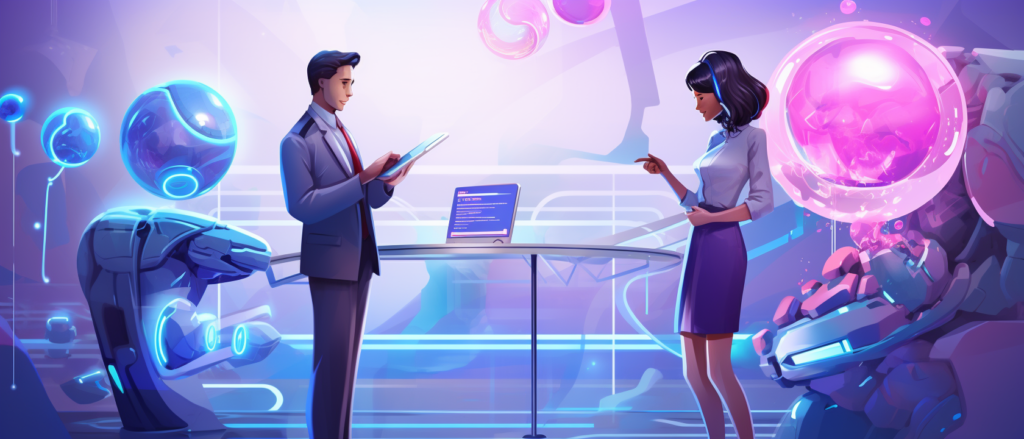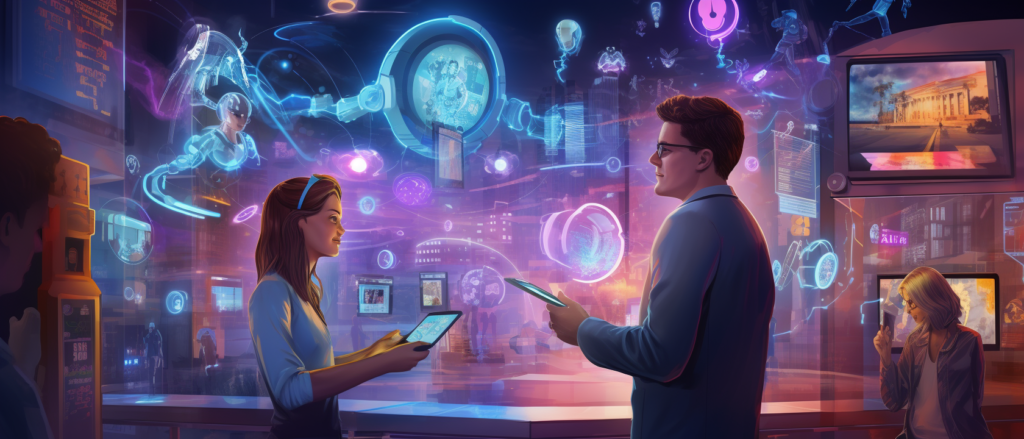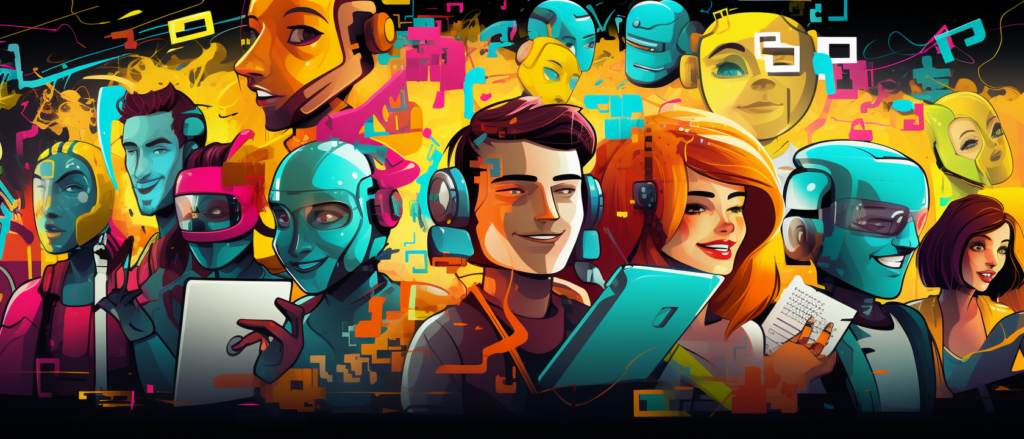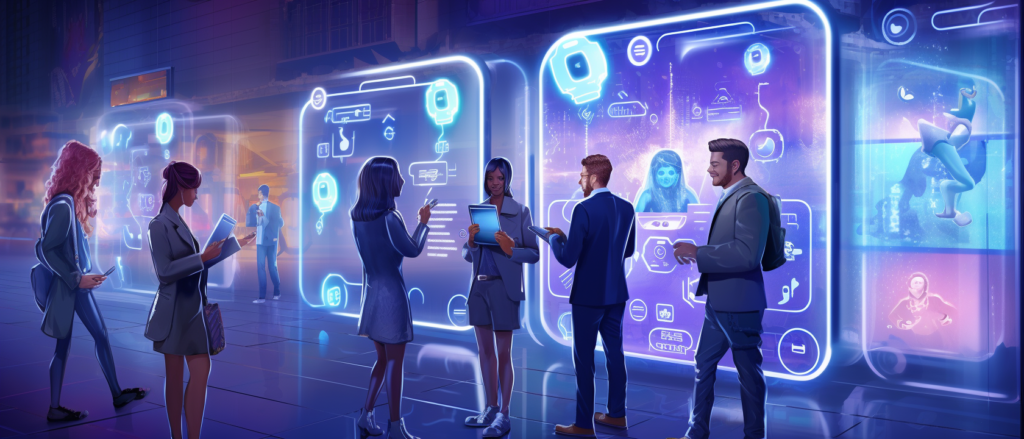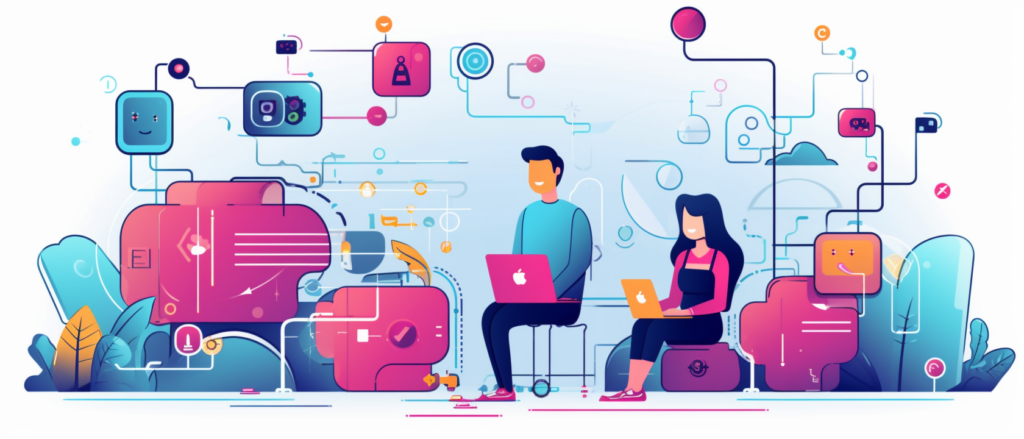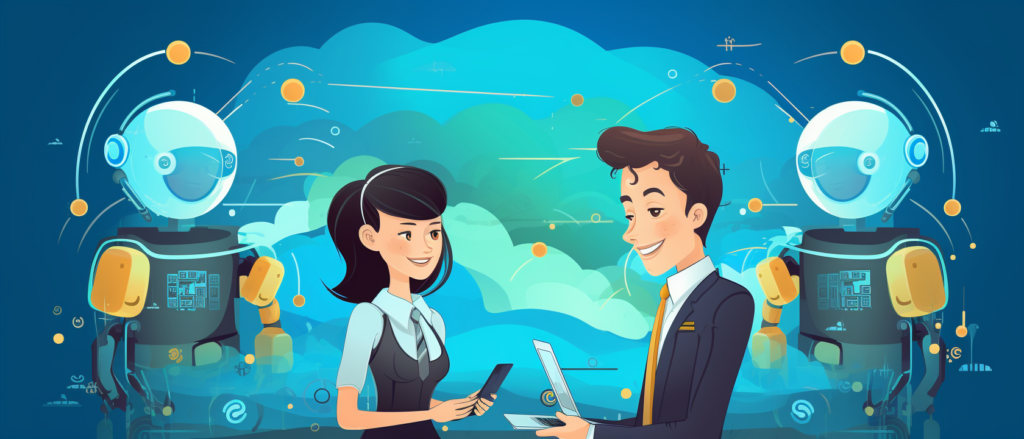Key Takeaways
✅ Personalized and Efficient Interactions: With conversational AI and chatbots, say goodbye to one-size-fits-all customer service. These savvy digital assistants provide tailored conversations in a heartbeat, ensuring your customers feel heard and helped 24/7. Imagine reducing those pesky wait times to zero and watching your customer satisfaction soar. Isn't that the dream?
✅ Continuous Learning and Adaptation: These chatbots aren't just smart—they're quick learners. Each interaction enhances their ability to understand and respond to your customers’ needs like a pro. They're the secret sauce for a service that keeps getting better, and who wouldn't want that?
✅ Seamless Integration with Human Agents: It's like having a super team where chatbots do the groundwork, and humans add the magic touch. This duo tackles customer issues faster than a hot knife through butter, streamlining your customer service in ways you never thought possible. Could this be the perfect blend for your team?
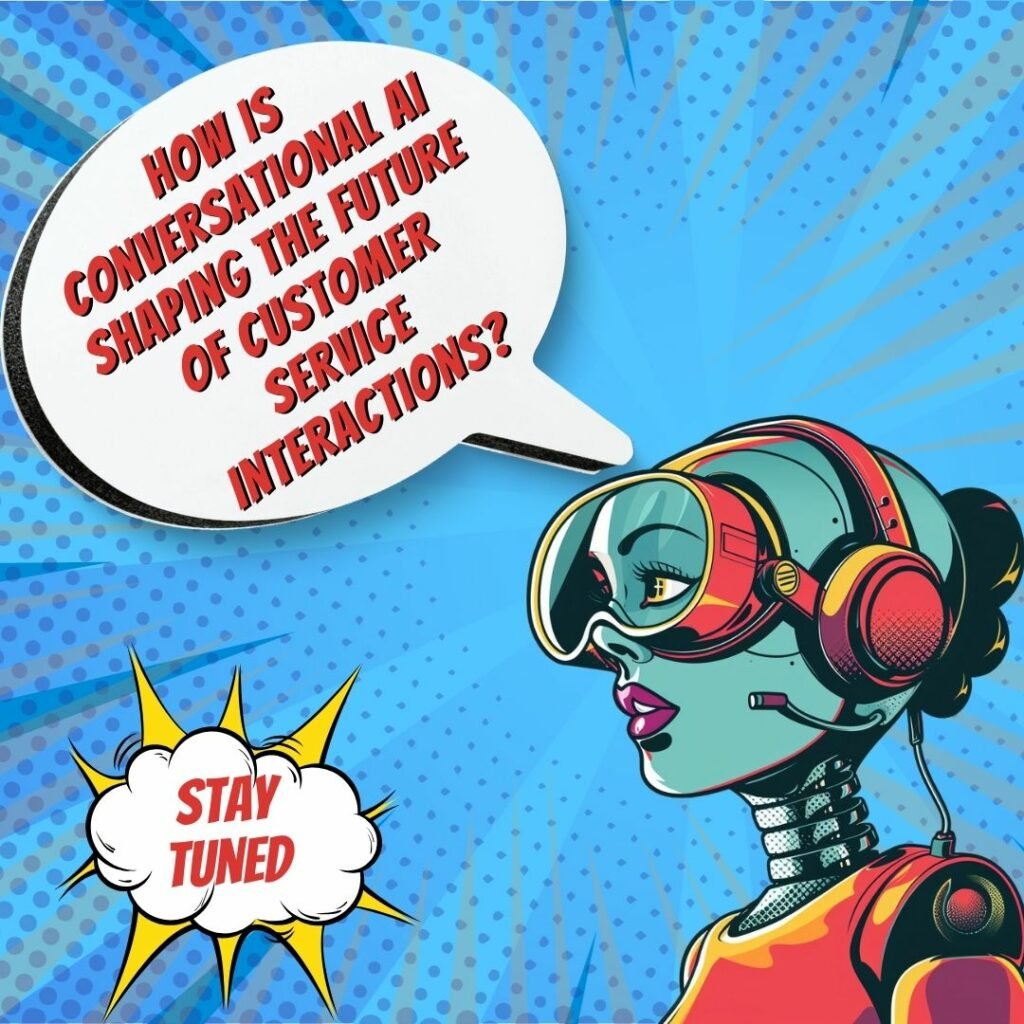
Introduction
Ever wondered what it would be like to have customer service that never sleeps, never gets tired, and always knows what to say? Welcome to the revolution of Conversational AI and chatbots; it's like having a superhero for your customer service team. Why is this such a big deal? Because let's face it, in the world where each customer interaction can make or break a relationship, ensuring every communication is spot on is not just important—it's everything. We're about to dive into a treasure trove of possibilities that these digital masterminds bring to the table.
Imagine a world where your customers no longer dread reaching out for support or information. Instead, they are met with immediate, accurate, and personalized service. This isn't a far-off dream—it's the reality that conversational AI and chatbots are creating right now. And it's not just about keeping up with the times; it's about being a step ahead. The opportunity? To not just satisfy your customers but to impress them, to not just cut costs, but to propel your revenue to new heights.
Intrigued? Hold on to your hats, because we're about to unravel actionable insights and groundbreaking information that will revolutionize your customer service interactions. Think bigger ROAS, maximized ROI, and a customer interaction journey that feels less like a transaction and more like a conversation with an old friend. Ready to take a peek into the future? Let's get this show on the road!
Top Statistics
| Statistics | Insight |
|---|---|
| Chatbot Market Growth: Projected to increase from $2.6 billion in 2019 to $9.4 billion by 2024. (MarketsandMarkets) | This showcases the impressive growth of chatbots, revealing their critical role in future customer service solutions. |
| AI Customer Service Market: Expected to reach $23.5 billion by 2025. (Grand View Research) | With such financial projections, it's no wonder businesses are rapidly adopting AI to enhance customer experiences. |
| Consumer Preference: 69% of consumers favor chatbots for speedy interactions. (Drift) | This figure speaks volumes about consumer expectations for quick and efficient service, something chatbots can deliver on. |
| Millennial Interaction: 40% of millennials chat with bots daily. (HubSpot) | Understanding this demographic's comfort with technology can guide customer service strategies for businesses. |
| Non-Human Interactions: 85% of customer service will not require human intervention by 2021. (Gartner) | The move towards automation in customer service is clear, and businesses need to adapt to this changing landscape. |
What are Conversational AI and Chatbots?
Have you ever sent a message to a business and got an instant reply? Odds are, you were chatting with a Conversational AI. These smart programs, also known as chatbots, use things like Natural Language Processing (NLP) and Machine Learning (ML) to understand and respond to you just like a human would. It's like having a conversation with a robot that's learned how to talk from the best of us. You might have come across Siri, Alexa, or even a customer service bot on a website. They range from simple ones that answer FAQs to advanced versions that can troubleshoot tech issues.
Benefits of Conversational AI and Chatbots
Imagine a store that's open non-stop, with assistants always ready to help. That's what chatbots bring to the table with their 24/7 presence. They can handle a bunch of customers all at once, offering personalized interactions and instant responses. It's not just about being there; it's about being efficient. Businesses love them because they cut down costs and keep their teams focused on complex tasks, while customers enjoy getting their issues solved quickly. This combo can make customers stick around longer, boosting their loyalty.
Use Cases and Applications
Ever wondered how these smart bots are used in the real world? In banking, they can check your balance; in retail, they suggest products; and in healthcare, they might help schedule your appointments. Their jobs range from answering straightforward questions to providing tailored recommendations. The best part? If things get tricky, they know when to hand you over to a human for that personal touch. This balance ensures no question is too tough to tackle.
Challenges and Limitations
But it's not all smooth sailing. Have you ever been misunderstood by a chatbot? That's one of the hurdles - language barriers and the occasional technical glitch. They're not great at picking up on emotions either, which can be a bit of a bummer when you need empathy. That's why there's a lot of behind-the-scenes work going on to teach these bots to understand different languages, accents, and slang, so they're less likely to get things wrong. It's an ongoing effort, but the aim is to make these interactions as close to chatting with a friend as possible.
The Future of Conversational AI and Chatbots
What does tomorrow look like for these talkative bots? They are expected to get even smarter, picking up on how you're feeling (sentiment analysis) and maybe even predicting what you'll need next (predictive analytics). The integration with other smart systems will likely become more seamless, allowing for an incredibly smooth experience. Ethically, though, we're treading new ground. How do they affect jobs? Are they invading our privacy? These are questions that need answering as we invite these bots into our lives and businesses.
AI Marketing Engineers Recommendation
Recommendation 1: Personalize the Chatbot Experience: Let's make this personal! Have you ever chatted with a bot that felt like you were just talking to a wall? No bueno. Here's the thing: Conversational AI and Chatbots are learning to get to know us, like a barista who remembers how we take our coffee. Stats are showing that tailored experiences can boost sales by a whopping 20%! So, if your chatbot can remember names, past purchases, and customer preferences, it can give that cozy “Hey, I know you!” vibe, making customers stick around and keeping wallets open.
Recommendation 2: Strike the Right Balance of AI and Human Touch: Ever felt like you're screaming into the void and all you get back is… "I did not understand your request"? Painful, right? Now, let's flip the script. Conversational AI is hot, but it doesn't mean we should toss real people out of the equation. It's about the handoff, where the bot tags in a human when things get tricky. The insight? Use the bot for the routine stuff, but keep a human on standby for that personal touch. It's like a superhero duo where each knows their strengths and together, they save the day — or at least, your customer's patience.
Recommendation 3: Prioritize Continuous Learning with Analytics: Remember that feeling when you ace a test because you studied? Well, chatbots can be top of the class too! With a gold mine of chat data at their virtual fingertips, bots can get smarter every day. But here's the catch: they need the right tools to learn. Software like Chatbase or Dashbot gives these bots a cheat sheet, constantly analyzing conversations and pinpointing where they're nailing it or failing it. The upside? Continuous learning means your bot becomes a better helper, guide, and seller, evolving with your customer's needs — it's like having a team member who's always up for a training course.
Relevant Links
Expand Your Marketing Horizons
- Chatbots Unleashed: Revolutionizing Customer Interactions
- AI-Powered Precision: A New Era in Advertising
- ChatGPT: The Game-Changer in Creative Marketing Content
- Predict the Future: How AI Analytics Shapes Marketing
- Conversational AI: Transforming Business One Chat at a Time
SEO Optimization & Strategy Development
- SEO in 2024: Still the King of Online Visibility
- Crafting Compelling Social Media Strategies for Brand Success
- The Ultimate Guide to SEO Marketing Mastery
- Small Business Growth with a Touch of ChatGPT Magic
Enhancing Customer Experience Through AI
- Maximize Your Brand Identity with AI-Infused Strategies
- The Powerful Integration of AI and Mobile Marketing
- Mapping Out Customer Journeys Using Advanced AI
- Innovating Marketing Strategies with AI Automation
Navigating the Digital Marketing Landscape
- Adapting to Change: Ethical Marketing in the Age of AI
- Google Ads & AI: A Match for Success
- Evolving Learning: Master Prompt Engineering
- Creating the Ultimate Digital Marketing Strategy
Conclusion
So there you have it – the inside scoop on chatbots and conversational AI and how they're shaking up the way we think about customer service. Can you imagine a world where every question you have is answered instantly, at any time of day? Well, you don't have to dream it, because it's becoming a reality. These tools aren't just about cutting down wait times or saving a few bucks for big companies, though that's a nice perk. No, it's about making your life as a customer a whole lot easier. They can remember your favorite pizza topping, remind you of your best friend's birthday, and even chat with you about the weather while processing your refund.
But what really sticks with us are the stories, right? Like the busy mom who got her banking question answered while juggling kids and groceries – without having to wait on hold. Or the night owl who got his tech glitch sorted at 2 AM without having to wait for business hours. Those little wins matter. Sure, there are hurdles. Sometimes they might not get our jokes, or misunderstand what we're looking for, but with every passing day, these chatbots get a little smarter, a bit more intuitive. That's thanks to the behind-the-scenes heroes working continuously to teach them about us – about how humans speak, feel, and think.
So what's next? Well, we're on the brink of having these bots predict our needs even before we voice them. It's both exciting and a tad scary, isn't it? As we embrace this future of customer service, it’s worth pondering – how will this technology grow alongside us, shaping the way we live and work? Are we ready for the next wave of innovation?
But let’s turn the spotlight on you for a moment. If this tech is the key to the next level of customer delight, might it be time for your business to step up its game? Imagine the stories your customers will tell when they get help from a friendly chatbot that never sleeps. Now, who wouldn’t want to be a part of that future?
FAQs
Question 1: What is Conversational AI and how does it relate to chatbots?
Answer: Conversational AI is like having a chat with a robot that almost sounds like a person. It uses some pretty smart tech to understand what we say and respond like a human would. Chatbots are those little chat windows you see on websites that pop up and offer help – they're powered by Conversational AI!
Question 2: What are the benefits of using chatbots for customer service?
Answer: Chatbots are the always-awake, never-grumpy customer service reps. They can chat with lots of people at once, any time of the day, answer quickly, save companies money, and make the conversation feel more personal.
Question 3: How do chatbots understand and respond to user queries?
Answer: Chatbots are a bit like clever parrots. They pick up on what you're asking by looking for certain keywords and then use rules or learn from past chats to come up with a helpful answer.
Question 4: What are the common use cases for chatbots in customer service?
Answer: Chatbots are getting really good at things like answering your top questions, suggesting products you might like, dealing with complaints, booking meetings, and even helping with your shopping.
Question 5: How can chatbots improve customer experience?
Answer: Imagine never having to wait on hold again. That's one way chatbots make things better. They're all about giving you quick, easy help that feels just right for you.
Question 6: What are the challenges associated with implementing chatbots in customer service?
Answer: It's not all smooth sailing – chatbots can stumble on complicated questions, they need to keep secret stuff secret, and they have to play nice with the other customer service tools.
Question 7: How can businesses measure the success of their chatbot implementation?
Answer: It's all about the numbers. Businesses look at how fast chatbots respond, how happy customers are afterward, how many issues get sorted, and if they're saving cash.
Question 8: What are the advanced features of chatbots in customer service?
Answer: Some chatbots can pick up on how you're feeling, understand different languages, work with voice commands, and know when a human needs to step in for a more personal touch.
Question 9: How can chatbots be integrated with other customer service channels?
Answer: Chatbots can team up with emails, phone calls, and social media to make sure you get a consistent helping hand no matter how you reach out.
Question 10: What are the best practices for designing and implementing chatbots for customer service?
Answer: To make chatbots the best they can be, it helps to have a clear plan, create chats that feel natural, and keep tweaking them based on what works and what doesn't.
Academic References
- Yuan, X., & et al. (2018). Conversational Agents in E-Commerce: Opportunities and Challenges. Journal of Business Research, 88, 532-541. This in-depth study delves into the burgeoning integration of chatbots within the e-commerce landscape, probing the duality of potential gains in customer service efficiency against the technological hurdles posed by natural language processing requisites.
- Zeine, R., & et al. (2019). The Impact of Chatbots on Customer Experience: Challenges and Opportunities. International Journal of Information Management, 48, 63-71. Through this article, the authors scrutinize the transformative effect of chatbots on customer experiences, accentuating the necessity for personalization, trustworthiness, and a touch of empathy to enhance the efficacy of chatbot interactions.
- Sharma, D., & et al. (2019). The Impact of Chatbots on Customer Satisfaction: A Comparative Study of Chatbot and Human Interactions. Journal of Retailing and Consumer Services, 50, 322-330. This comparative analysis offers a peek into the intriguing world of automated and human customer service, presenting evidence that when chatbots are finely tuned to address specific needs, they stand to significantly uplift customer satisfaction levels.
- Zhang, J., & et al. (2020). The Role of Chatbots in Customer Service: An Empirical Study. Journal of Business Research, 116, 389-397. This empirical investigation casts light on the pivotal role chatbots can play in expediting customer service, heralding improvements not just in responding to queries in real-time but also in fostering customer satisfaction and loyalty.
- Al-Halhouli, M., & et al. (2020). Chatbots in Customer Service: A Systematic Literature Review. International Journal of Information Management, 54, 102102. Catering to those keen on a panoramic view of chatbot research, this systematic literature review uncovers the terrain of chatbots in customer service - painting a picture rich with benefits, studded with challenges, and beckoning towards fascinating avenues for future exploration.

